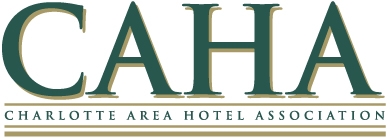Labor shortages are dotting the national landscape, but economists are hoping it's a short-term issue.
Some sectors, such as restaurants and hospitality, have been slower to rebound from Covid-19's impact. Now opening at increased capacity, some of these businesses are finding it difficult to staff up to meet the demand. This is also the reality for many Charlotte-area businesses.
Local companies are trying to find more workers. The metro area lost 160,400 jobs during last year's pandemic-related shutdown, most of which were at restaurants, bars and hotels, said Mark Vitner, senior economist at Wells Fargo. It has since added back about 113,600 jobs. That still leaves nearly 47,000 jobs to recover.
About 4.6 million workers nationwide are absent from the labor force because of the virus. There are multiple factors at play. Approximately 700,000 people left because of a skills mismatch. Others are hesitant about in-person interactions. About 1.2 million people may not return due to retirement, according to a recent study from Bank of America Global Research.
Workers close to retirement may have elected to step back earlier because of Covid-19. Financial markets have stayed strong in this downturn, meaning those workers have the means to retire. That's a shift from the Great Recession when older employees were forced to stay longer, said Joe Song, senior U.S. economist at BofA Global Research.
"We haven't seen the same sort of dynamics that we'd see in a traditional downturn," Song said. "The question moving forward is, does that pace slow down and get back to pre-pandemic levels, or is there a level shift in the number of retired workers?"
He said it will take some time for younger workers to fill in the roles. Skills gaps tend to correct themselves when the labor market is booming. That's when workers are more likely to go back to school and employers are more likely to train on the job, Song said. Employers continue to hire for more technical positions and look for experts on new machines and devices, he said.
Song said he expects employment to return to pre-pandemic levels early next year.
Another issue is expanded federal employment benefits that allow people to stay out of the workforce longer than usual, Vitner said. As expected, the latest stimulus package took away some of the workers' urgency. Vitner said states could try incentivizing the return to work. Montana, for example, is giving $1,200 bonuses to eligible workers who find new jobs.
The other option is to wait until the expanded benefits run out in September, Vitner said. He is confident labor shortages will diminish after that change.
The April jobs report released on Friday was a disappointing one, with the national economy adding 266,000 jobs last month, instead of the predicted 1 million positions. The national unemployment rate also rose 0.1% from March to April, the first rise in about a year. North Carolina's unemployment rate was at 5.2% in March.
Gus Faucher, chief economist at PNC Financial Services Group, said it would take the country two and a half years to return to pre-pandemic job levels at this rate. However, other economic indicators showed strength. He is hoping April is just a short-term lull in the data.
The national labor-force participation rate is well below pre-pandemic levels, Faucher said, but it has started to pick up in the last couple months.
"Lots of open questions out there, but I am hopeful that, as we get further away from the pandemic, that we will see more people re-entering the labor force and that they'll provide the workforce for job creation," he said.
Vitner is expecting strong job growth in the next couple of months. Much of this area's job growth is coming from newer companies moving here, he noted. Younger workers will also be out of school and looking for work this summer. Vitner said Charlotte could recover those 47,000 jobs or more by the end of the year. He also expects it to continue to be one of the fastest-growing metro areas in the country.
Labor supply issues could limit economic recovery, Vitner said. There will still be growth, however. Economists are projecting an 8.9% GDP growth rate in the second quarter, followed by 8.1% in the third quarter, he said.
